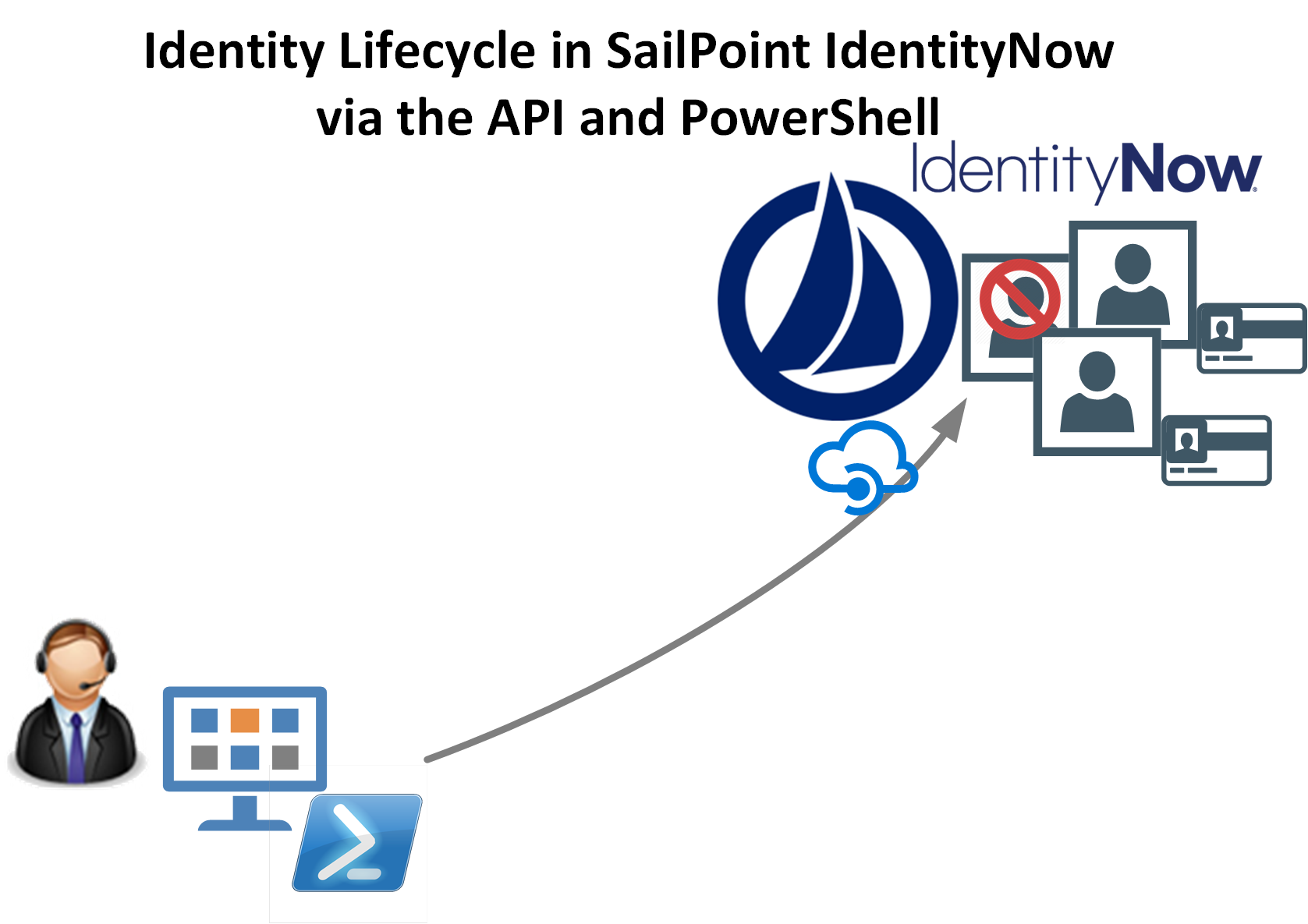
Update: Oct 2019. Lifecycle Management of Identities can be easily performed using the SailPoint IdentityNow PowerShell Module.
Introduction
If you’ve been following along I’ve been posting about leveraging the SailPoint IdentityNow API for;
- Reporting on SailPoint IdentityNow Identities using the ‘Search’ (Beta) API and PowerShell
- Authoring Identities in SailPoint IdentityNow via the API and PowerShell
Now that I’ve covered Searching and Authoring all that is left is lifecycle management. And that’s what I’ll cover in this post. Updating and Deleting Entities via the API.
Updating SailPoint IdentityNow Entities
If you have not read the first post in this series, start there as ‘updating’ builds on top of Search/Reporting. It also covers enabling the API.
My quick start guide to updating IdentityNow Entities starts with searching to find the Entities (probably Users) you want to update. In my example below I’m searching for all objects on a Source. Then I iterate through the results and update them. I’m updating the Country attribute.
When updating an entity (e.g User) you need to perform a PATCH webrequest specifying the underlying ID (objectID) of the object. The URI format looks like;
https://orgName.api.identitynow.com/v2/accounts/2c91808365bd1f010165caf761625bcd?org=orgName
Example Script
Here is an example script. As per the previous two posts, change all the lines for your tenant and your API details.
- Line 16 is the query for objects to update
- Lines 39-41 is the attribute to update
Updating Manager
For manager, the attribute is a reference on the IdentityNow Source to the Manager. On my “External Entities” Source I locate the object representing the Manager and obtain their accountId (which in my case is firstname.lastname) and set that as the ManagerID. I then find the users that I want to update for this manager and update them as we did in the previous example, but with a reference to accountId of the Manager for the Manager attribute.
NOTE: When querying IdentityNow via the API the syntax is very important. Especially when also incorporating variables. If I have a variable $manager with a displayName value, that would normally contain a space. So we need to capture the whole string. Here is an example of doing that. So in order to query for $manager = “Rick Sanchez” in PowerShell that would be:
$queryManager = "attributes.displayName:"+'"'+"$($manager)"+'"'
which will give us attributes.displayName:”Rick Sanchez” which will return in my case the single object for Rich Sanchez not a list of references to Rick Sanchez.
Deleting SailPoint IdentityNow Entities
Deleting is very similar to Updating. Again the easiest method is to search and obtain the object(s) to be deleted and then delete via a DELETE webrequest specifying the underlying ID (objectID) of the object to be deleted. The URI looks like;
https://orgName.api.identitynow.com/v2/accounts/2c91808565bd1f110165cb628d1a702f?org=orgName
Example Script
Here is an example script. It searches IdentityNow based on object naming (see line 14), then finds the Source that the object is connected to that we wish to delete. In this example the Source is the one I created in the last post “External Entities”. Update for the name of your Source (line 25).
Summary
Using the API we can Search for Identities, Author and Update them.
